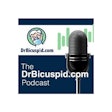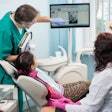
Editor's note: Allan Farman's column, Talking Pictures, appears regularly on the DrBicuspid.com advice and opinion page, Second Opinion.
At the Asian Congress of Oral and Maxillofacial Radiology in Japan in November, there was a DICOM (the Digital Imaging and Communications in Medicine standard) workshop at which several vendors from Asia presented their DICOM-compliant software systems for dental radiology.
It was apparent that the full-mouth series demonstrated by these vendors were largely 12-14 images in total, compared with the 20 images commonly employed in the U.S. Given the assumption that the dose per image is approximately equal (which it is not), this would result in a 30% to 40% decrease in patient dose.
The question that probably should be asked is: What information would be lost in the process of this dose savings? Is that extra information worth the added risk from the additional radiation dose?
One study that looked at reducing the number of intraoral radiographs to a minipanel of six for use on mentally retarded adults found that relatively little information was lost by using this approach (Dentomaxillofacial Radiology, January 2003, Vol. 32:1, pp. 15-20).
Perhaps it is time now to further evaluate the utility of the full-mouth radiographic series in dental practice? Certainly, standard oral radiology texts produced in the U.S. at this stage do tend to enforce the traditional full-mouth series. Perhaps it is time to change?
Along these lines, DICOM Working Group 22, which focuses on dentistry, has been involved in leading several new supplements to the DICOM standard. The most recent of these, now approved through letter ballot following public comment, is "Structured Display."
The original concept of structured display was to be able to transmit collections of images commonly used by dentists, including the full-mouth series of radiographic images. This soon expanded with use cases from several additional DICOM working groups to include ophthalmology image charts, radiology teaching cases, and displays for mammography and cardiology; hence, through DICOM activity, dentistry has contributed a set of guidelines that affect many areas within healthcare.
The DICOM standards provide rules to follow for image communication and, in this case, display. They do not specify a standard format or what should be displayed. Outside of DICOM, but equally important for patient care, is that radiographs that are taken should be made based upon diagnostic or treatment needs.
The comments and observations expressed herein do not necessarily reflect the opinions of DrBicuspid.com, nor should they be construed as an endorsement or admonishment of any particular idea, vendor, or organization.
Copyright © 2008 DrBicuspid.com


















